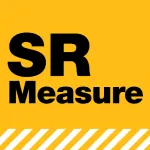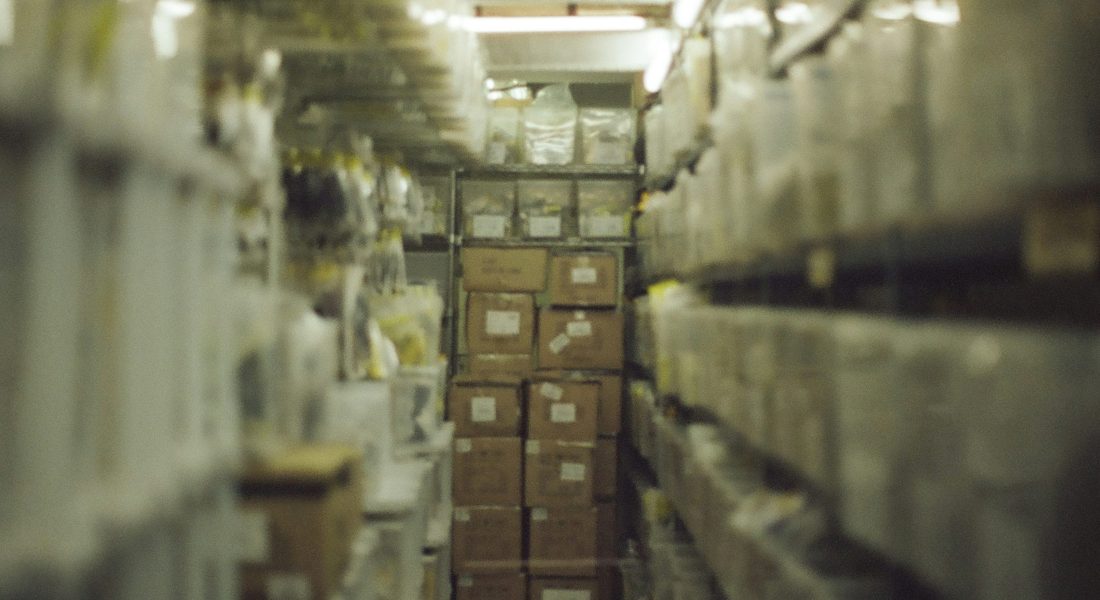Managing stockpiles is a big deal in industries like mining, construction, and agriculture, where knowing exact volumes can make or break your bottom line. Whether you’re tracking gravel, coal, or grain, the right measurement tool saves you from guesswork and costly mistakes. I once heard about a site manager who relied on eyeballing his piles until a laser scanner revealed he was off by thousands of cubic yards. In this article, we’re reviewing the top stockpile measurement tools of 2025, breaking down what makes them stand out and how they fit into real-world operations.

1. FlyPix AI
FlyPix AI comes from a team focused on making geospatial analysis easier through AI, especially for handling satellite, aerial, and drone images. We build a platform where users can train custom models to spot and outline objects in those images, including stockpile measurement tools, tying everything to exact locations on maps. Our goal is to let people from different fields adapt the tools to their own setups without needing deep tech skills, covering stuff like construction sites or farm fields. It’s all about turning raw imagery into useful insights that fit specific workflows.
Our company emphasizes flexibility, so industries can tweak AI for their unique challenges, whether it’s monitoring changes over time or inspecting large areas. We handle everything from basic free access to beefier plans for teams that need more storage and processing power. Our support ramps up with higher tiers, including chats and expert help, and we integrate things like multispectral data for deeper analysis.
Key Highlights:
- AI for detecting and outlining objects in geospatial images
- Custom model training without coding
- Works with satellite, drone, and aerial data
- Dashboard for analytics and predictions
- Options for collaboration like exporting layers
Who it’s best for:
- Teams in agriculture or construction needing image-based monitoring
- Users wanting to customize AI for specific object detection
- Smaller operations starting with free tools
- Larger groups requiring API and team features
Contacts:
- Website: flypix.ai
- Email: info@flypix.ai
- LinkedIn: www.linkedin.com/company/flypix-ai
- Address: Robert-Bosch-Str. 7, 64293 Darmstadt, Germany
- Phone: +49 6151 2776497

2. StockPiler
Klau Geomatics, the folks behind StockPiler, draw from their background in aerial mapping and PPK tech to create systems that automate bulk material checks. They set up fixed LiDAR scanners at sites like mines or ports, using edge computing to crunch data right there and spit out volume readings fast. The aim is to ditch old manual surveys or drone waits, giving real-time access via a dashboard that works anywhere, helping with logistics like scheduling trucks based on actual stock levels.
Their hardware runs in tough enclosures with Linux, controlled over networks, and the software lets you customize for things beyond volumes, like flow rates or change tracking. Developed by a team that’s pushed boundaries in UAV accuracy, they focus on integrating into business systems for ongoing inventory views, especially in regulated spots like Australia where precise data avoids penalties.
Key Highlights:
- Cluster of fixed LiDAR for 3D point clouds
- Edge computing for quick on-site calculations
- Automated scans on demand or schedule
- Dashboard access from any browser
- Adaptable for mass conversion and zoning
Who it’s best for:
- Mining or port operations with constant stock changes
- Sites wanting no-survey-crew automation
- Industries under strict regs needing audit-ready data
- Facilities integrating with existing logistics software
Contacts:
- Website: stockpiler.com.au
- E-mail: contact@geomatics.com.au
- Address: 50 Berry St, Nowra NSW 2541
- Phone: +61 400 154 109

3. Laser Tech TruPulse and MapSmart
Laser Tech has been at it since the mid-80s, pioneering LIDAR for speed and distance tools, now extending to pro measurement with reflectorless lasers. Their TruPulse series pairs with MapSmart software on mobile devices to map and measure stockpiles safely from afar, no prisms or climbing needed. The company targets field pros who need quick data for volumes in places like aggregates or bins, focusing on accuracy without hassle.
They build for versatility across industries, from traffic to mining, with apps that handle distance, height, and positioning. MapSmart integrates their rangefinders into a total station-like setup, letting one person collect and calculate on the spot. It’s about solving real fieldwork pains, like hazardous spots, with tools that evolved from law enforcement gear.
Key Highlights:
- Handheld laser rangefinders for reflectorless shots
- MapSmart app for field mapping and volume calc
- Works indoors or on rough surfaces
- Integrates with accessories for full surveys
- One-time licensing for the software
Who it’s best for:
- Field crews avoiding pile climbs
- Mining or construction for quick inventories
- Teams with Android or iPad setups
- Pros needing portable, safe measurement
Contacts:
- Website: lasertech.com
- App Store: apps.apple.com/us/app/lasersoft-mapsmart/id1625997522
- Google Play: play.google.com/store/apps/details?id=com.lasertech.mapsmart
- Instagram: www.instagram.com/lasertechnologyinc
- LinkedIn: www.linkedin.com/company/laser-technology
- Twitter: x.com/lasertechinc_
- Facebook: www.facebook.com/LaserTechnologyInc
- Address: Laser Technology, Inc. 6912 South Quentin Street, Suite A
- Phone: +1 303-649-1000

4. Blickfeld QbVolume
Blickfeld develops 3D LiDAR sensors with built-in software for perception, aiming to make environmental scanning reliable for automation and monitoring. Their QbVolume setup uses sensors mounted around stockpiles to generate point clouds for volume tracking, handling open yards or indoor spots with real-time data. The company pushes for scalable installs, from single units to multi-sensor arrays, even in dusty conditions, to feed into dashboards or ERP systems.
They focus on end-to-end solutions that cut manual work, using on-device processing for fast results and APIs for workflows. With roots in intelligent detection, they adapt tech for security or traffic too, but for volumes, it’s about consistent surface scans that account for irregular shapes without constant human input.
Key Highlights:
- 3D LiDAR for full-surface point clouds
- On-device processing for real-time volumes
- Multi-sensor options for big areas
- Dashboard and API for data integration
- Tough build for harsh environments
Who it’s best for:
- Waste or recycling sites with bulk monitoring
- Mining ops tracking open piles
- Logistics needing continuous inventory
- Teams integrating with central systems
Contacts:
- Website: www.blickfeld.com
- LinkedIn: www.linkedin.com/company/blickfeld-gmbh
- Facebook: www.facebook.com/BlickfeldGmbH
- Address: Barthstrasse 14, 80339 Munich, Germany
- Phone: +49 89 230 69 35 00

5. StockAce
ITS Geo Solutions crafts augmented reality tools for GIS and mapping, with StockAce turning iPhones or iPads into scanners for volumes without extra gear. They enable walking around piles or pits to capture surfaces via AR, calculating on-device even indoors or underground where GPS fails. The goal is simple workflows for bunkers or free-standing stocks, using barcodes for ID and generating reports right away.
No cloud needed – everything processes locally, with exports for further use, and they support custom materials for mass estimates. From Germany, they target utilities to mining, emphasizing ease for repeated surveys without heavy setups.
Key Highlights:
- AR scanning on iOS devices with LiDAR option
- On-device volume and mass calculation
- Works offline, indoors, or underground
- PDF reports and point cloud exports
- Barcode support for stock ID
Who it’s best for:
- Small teams with mobile Apple devices
- Underground or hall-based operations
- Quick, no-hardware surveys of pits
- Users wanting instant, portable results
Contacts:
- Website: its-geo.eu
- E-mail: info@its-geo.de
- App Store: apps.apple.com/us/app/stockace/id1445066626
- Twitter: x.com/itsgeosolutions
- Facebook: www.facebook.com/itsgeosolutions
- Address: ITS Geo Solutions GmbH, Hans-Knöll-Strasse 6, Jena 07745 Germany
- Phone: +49 3641 3279 080

6. SR Measure
The team at Stockpile Reports focuses on making inventory tracking straightforward with SR Measure, a mobile app that lets users measure stockpiles using just their phones. They aim to simplify the process for folks in industries like aggregates or construction, where quick volume checks are key to keeping tabs on materials. By leveraging phone-based tech, they eliminate the need for clunky equipment, letting users walk around a pile or bunker to get results in seconds, with data stored locally or in a cloud dashboard for bigger plans.
Their work centers on flexibility and speed, supporting both solo users and larger teams with tools to manage piles by type or site. They also offer extras like drone integration for enterprise setups, but the core is about giving people a no-fuss way to measure and report, whether it’s a one-off pile or a sprawling operation across multiple locations.
Key Highlights:
- Phone-based scanning for freestanding or bunker stockpiles
- Local processing with optional cloud dashboard
- Material and tonnage tracking for inventory
- Audit-ready reports with export options
- Enterprise plans include drone and camera support
Who it’s best for:
- Solo operators needing quick, one-off measurements
- Small businesses managing multiple piles
- Enterprises with large-scale, multi-site inventories
- Teams wanting mobile-first, simple workflows
Contacts:
- Website: srmeasure.com
- E-mail: support@stockpilereports.com
- App Store: apps.apple.com/us/app/sr-measure/id1569961235
- Google Play: play.google.com/store/apps/details?id=io.everypoint.srmeasure
- Instagram: www.instagram.com/stockpilereports
- LinkedIn: www.linkedin.com/company/stockpile-reports
- Twitter: x.com/stockpilereport
- Facebook: www.facebook.com/StockpileReports
- Address: 8201 164th Ave NE, PMB 55 Redmond, WA 98052
- Phone: (425) 428-5266

7. DroneDeploy
DroneDeploy builds tools to turn drone-captured images into actionable data, with a focus on stockpile measurement through both AI and manual methods. Their team works to streamline how industries like construction or mining handle inventory by processing aerial maps into detailed models. Users can either draw pile boundaries themselves or let the AI detect them, making it easier to calculate volumes and organize materials for reports.
They prioritize integration and accessibility, offering a platform where teams can assign material types, track changes, and share data via PDF or CSV. Built with feedback from users, their system aims to cut down on manual work and improve safety by reducing the need for on-site measurements, all while keeping data clear for office and field teams alike.
Key Highlights:
- AI-driven stockpile detection for quick outlining
- Manual polygon drawing for precise volume calculations
- Material type assignment for inventory tracking
- Cut and fill analysis for site changes
- Exportable reports in PDF or CSV formats
Who it’s best for:
- Construction teams using drone surveys
- Managers needing detailed material reports
- Operations wanting automated pile detection
- Teams requiring shareable, audit-friendly data
Contacts:
- Website: dronedeploy.com
- Instagram: www.instagram.com/dronedeploy
- LinkedIn: www.linkedin.com/company/dronedeploy
- Twitter: x.com/DroneDeploy
- Facebook: www.facebook.com/Dronedeploy

8. Propeller
Propeller’s team develops a platform that combines drone mapping with other data sources like GNSS or total stations to create a unified view of worksites. They focus on helping industries like aggregates and construction measure stockpiles accurately by processing survey data into 3D maps. Their tools let users outline piles, calculate volumes, and even factor in material properties like density for mass and cost estimates.
Beyond measurements, they aim to connect field and office teams by centralizing site data, from design files to machine telematics. Their approach emphasizes keeping everything in one place, so crews can track progress, share updates, and plan next steps without juggling multiple systems.
Key Highlights:
- Combines drone, GNSS, and other survey data
- Stockpile volume calculations with material properties
- Surface comparison for tracking changes
- Centralized platform for site docs and collaboration
- Real-time machine tracking with add-ons
Who it’s best for:
- Construction or quarry teams using mixed survey methods
- Managers needing a single hub for site data
- Operators tracking machine efficiency
- Teams integrating with CAD or project software
Contacts:
- Website: www.propelleraero.com
- App Store: apps.apple.com/us/app/propeller-mobile-3d-mapping/id1644272004
- Google Play: play.google.com/store/apps/details?id=com.propelleraero.visualiser
- Instagram: www.instagram.com/propeller_aero
- LinkedIn: www.linkedin.com/company/propeller-aero
- Facebook: www.facebook.com/propelleraero
Wrapping Up: Choosing the Right Stockpile Tool
Stockpile measurement has come a long way from the days of pacing around with a tape measure or waiting weeks for survey results. The tools we’ve looked at – from phone apps to drone-powered platforms and fixed LiDAR setups – each tackle the challenge of tracking volumes in their own way. Some lean on AI to make sense of aerial images, others use lasers for pinpoint scans, and a few turn your smartphone into a survey tool. What they all share is a focus on cutting down time, boosting accuracy, and keeping workers safer by reducing the need to climb piles or dodge hazards.
Picking the right one depends on your setup. A small crew might vibe with a mobile app for quick checks, while a sprawling mine could need a system with real-time dashboards and ERP tie-ins. I’ve seen folks get overwhelmed by too many options, but it’s worth thinking about your site’s needs – scale, environment, and how often you measure. Test a few, maybe start with a free trial, and see what fits your workflow. The goal isn’t just numbers; it’s about getting data you can trust to make smart calls without breaking a sweat.
